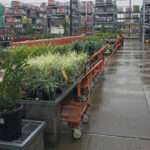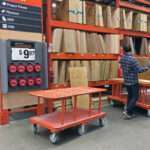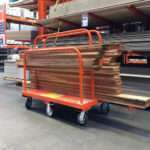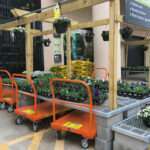P&H does it ourself for the do-it-yourself retail market:
Although our research tells us that ecommerce sales in the home improvement retail industry have been steadily building over the past few years, here at P&H, we have a hard time picturing ourselves ordering up those petunias for the flower bed around that tree in the front yard anytime soon.
Historically, home improvement stores built their business by catering to the “do it yourselfers” of the world. That includes the do it yourself landscaper, do it yourself plumber, electrician, carpenter and remodelers of all types. Part of the overall experience of doing it yourself is going to the store, feeling and smelling the materials, including the petunias, the paint and the wood, and selecting just the right ones for your home improvement project. It’s an immersive creative experience.
So P&H is “doing it ourselves” and sticking to our creative plan to continuously improve the already outstanding line of wheel and caster products that we have developed for the home improvement retail market. We just want to make sure that when you grab that lumber cart to load those 2 x 4’s onto and start to push it out to your truck, you don’t need lumbar support by the time you get it across the parking lot.
E-commerce Plays Bigger Role in Home Improvement – Sales Near $11 Billion, Reports NPD
Port Washington, NY, May 9, 2017 – Online sales of home improvement products that span everything from plumbing and hardware to storage and décor, have grown 41 percent in the 12 months ending March 2017, reports The NPD Group, a leading global information company. The e-commerce home improvement market reached $10.9 billion in sales for the year, according to NPD’s receipt mining service, Checkout TrackingSM.
With the exception of outdoor living, online sales of each major segment of the home improvement market grew in the 12 months ending March 2017, and almost every category tracked within those segments experienced double-digit online dollar growth. The fastest growing categories last year were plumbing pipes and fittings, light bulbs, and ceiling fans, and the categories with the largest online sales gains were home décor, light fixtures and lamps, and area rugs.
“The pace at which e-commerce is gaining acceptance among home improvement consumers emphasizes the need to understand how consumers are utilizing online and in-store shopping options, and how to make them work together,” said Joe Derochowski, executive director and home industry analyst at NPD. “Marketers can capture the replenishment of commodity products, like light bulbs and air filters, by offering online convenience, but there are also opportunities to benefit from consumer showrooming for bigger ticket items, like bathtubs and vanities, with the in-store experience.”







